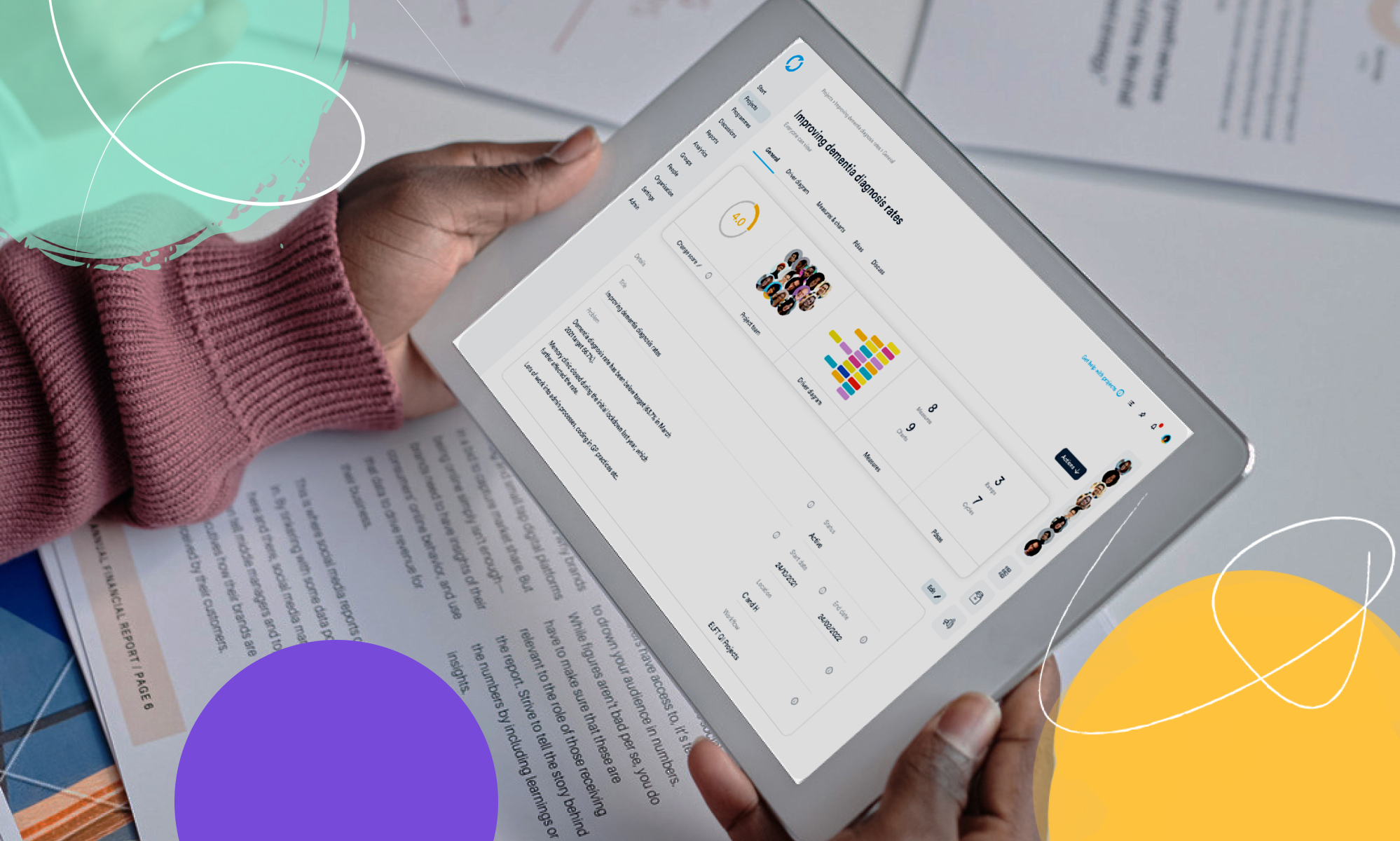Start improving with Life QI today
Full access to all Life QI features and a support team excited to help you. Quality improvement has never been easier.

Organisation already using Life QI?
Sign-up

Life QI is a platform designed to facilitate quality improvement work by providing a centralised space for teams to manage and track their projects. But it is not just for managing the execution of improvement projects. One of the key utilities of Life QI is its reporting functionality. Whilst the platform is first and foremost built to enable teams to execute their improvement ideas, the reporting of this work out to stakeholders around the organisation is also vital. It is this reporting that feeds the governance and decision-making process surrounding an organisation’s continuous improvement efforts.
In this article we outline the key types of reporting possible from Life QI and highlight a few best practice examples from the Life QI community.
Before we dive into the details of different report types and examples it is useful to outline that reports extracted from Life QI come in two file types – PDF or CSV (Excel file). The file format used is dictated by the report type and template used to create it.
If your report is a table containing top-level fields from multiple projects, you can choose to download it as a PDF or CSV file. All other reports, i.e. those containing more detailed content from one or more projects, will be exported as A4 portrait PDF files.
You can choose to run a report on one project or include multiple projects in your report. It is important to note different report templates are needed for single versus multiple project reports. Plus, you ‘run’ these reports from different places in Life QI.
The next two sections unpack how each of these report types works…
If you are looking to report on one of your projects, simply open the project and you can run a report via the Actions button (near the top right of the page). More detailed instructions are available in this help article.
Some best practice examples of project reports we see from across the Life QI community include:
You may not see all these report types available when you run a report on your project. The report types available to you are controlled by your Admin users, who are responsible for creating and providing access to the various reports your organisation uses. Please reach out to your Admin users or our support team if you think your list of report types needs updating.
You can include any field and any information from your project in a report – except the contents of discussions and the files attached to your project. These in-built project fields can be included in the report template, which outlines the structure of the report, as well as extra fields to be filled out by the user when the report is run. These extra fields are often used to capture a status update, describe recent learning, or outline plans for the next phase of the project.
The information contained in a report is controlled by the report template. Learn more about how to create these templates in this help article.
You can run a report that includes information from multiple projects from the Project list page. Here you filter the list to show the projects you want to report on and then click the Actions button above the list and then select the Reports option. Further instructions are available here.
List reports are run using report templates designed for multiple projects. If you don’t want to build your own list report template you can use one of the default templates, such as the ‘Project summaries’ report.
The kind of scenarios when a list report is useful include:
Just like with single project reports, the templates available to you are controlled by your Admin users, so reach out to them if you need any extra report templates created.
Reports in Life QI play a vital role in tracking the progress and outcomes of quality improvement projects. They offer real-time data on various project metrics, such as active, cancelled and completion status, milestones achieved, and the impact on key performance indicators. This information empowers stakeholders to assess the effectiveness of their improvement efforts and make data-driven decisions for future projects.
The real power in this reporting comes from the fact that for most users Life QI is not about reporting, it’s a space to collaborate with colleagues to plan and execute their improvement project. Project teams benefit from having a dedicated project space with in-built improvement tools. The reporting that comes from these projects is then an efficient benefit of having all your teams capturing their own in one place.
If you want help in shaping reports for your organisation reach out to your Customer Success Manager or contact the support team on help@lifeqisystem.com.
Full access to all Life QI features and a support team excited to help you. Quality improvement has never been easier.

Organisation already using Life QI?
Sign-up